#tawa recipe
Text
Domino's Style Cheesy Garlic Bread 🍞 | Instant Tawa Recipe

Full recipe link- Cheesy Garlic Bread
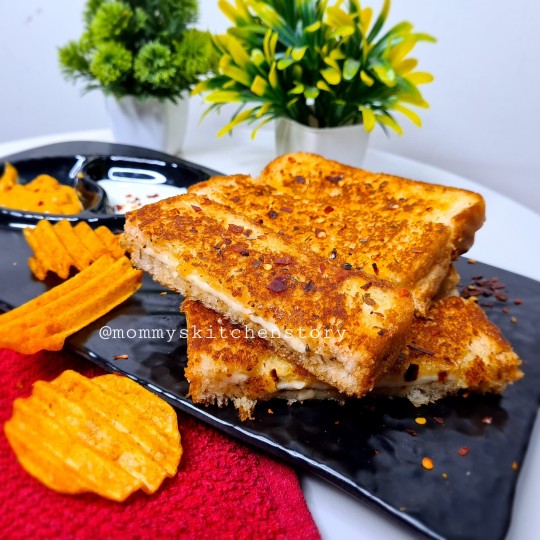
#Domino's Garlic Bread#mommyskitchenstory#foodblogger#food photography#easytocook#delicious#recipes#homemade#vegrecipe#yummy#youtube#garlic bread recipe#tawa recipe#no oven#no Microwave#no bake#quick recipes#instant recipes#Domino's Style Garlic Bread#how to make#without oven
4 notes
·
View notes
Text
Bread Pizza On Tawa | Quick and Easy Bread Pizza Recipe
Please like share subscribe to my YouTube channel🙏🙏
#Bread Pizza On Tawa#bread pizza#bread pizza recipe#viral#trending#mann meri jaan#king#champagne talk#pizza#pizza recipe#recipe video
2 notes
·
View notes
Text
Tawa Fish fry rice
Rice mixed with hot fish fried oil.. growing up, during the vacations my aunt always fried fish in her garden in the fireplace in a large tawa. Once the fishes are fried, she will add hot cooked rice and mix well and toast the rice until nicely done. Then me and my cousins all got a share of that hot spicy fish oil rice and fish on top that we all ate sitting around her. Great times.. I wanted to…
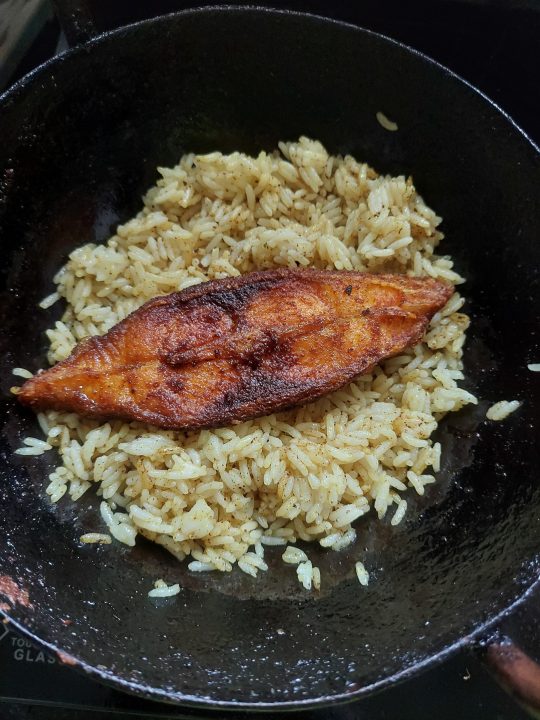
View On WordPress
#blogger#Blogging#Easy recipes#Fish fry rice#Food blog#Food blogger#Food photography#Recipes#Tawa Fish fry rice#Writing#Writing recipes
2 notes
·
View notes
Text

A Paneers Tikka Sandwich is a popular Indian street food dish, made with shredded chicken and a spicy masala sauce. It is usually served on a bun or naan bread, topped with onions, tomatoes, and cilantro. It is typically served with a yogurt-based raita and pickled onions. The flavor of the sandwich is spicy and tangy, with a hint of sweetness from the masala sauce. Paneers Tikka Sandwich is a great snack or light meal.
#paneer tikka sandwich on topmost recipes#paneer tikka sandwich#best street food near me#paneer tikka on tawa#paneer tikka recipe in hindi#paneer recipes dry on topmost recipes#paneer recipes dry#paneer recipes snacks
0 notes
Text
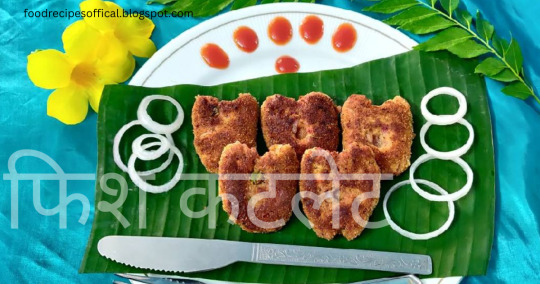
In Food Recipes we teach you how to make fish cutlets. Cutlets are a typical starter in French cuisine. In Indian cuisine, a cutlet is typically a mixture of mashed vegetables (potatoes, carrots, beans) or cooked meat (mutton). , refers to a stuffing of chicken or fish) that is fried with a batter/covering. The meat is cooked with spices – onions, cardamom, cloves, cinnamon, coriander (cilantro), green chillies, lemon and salt. It is then dipped in egg mixture or corn starch and then in bread crumbs (see also breaded cutlet), and fried in ghee or vegetable oil. Mostly chicken and mutton cutlets are very popular snacks in eastern part of India especially in Kolkata. If you are a fish lover then this recipe is for you. Many of you must have tried fish pakora, have you ever eaten fish cutlet. It is very easy to make them. These are crispy fish prepared in potatoes and spices and deep fried. It will prove to be a great snack during the party. Mixing with spices, coating with egg, coating with bread crumbs and corn flour and deep frying. Read more
#Garlic Spinach#Veggie Puffs#Mix Veg#Roasted Potato#Malai Pyaaz#Tawa Pulao#Paneer Tikka#Cheese stick snacks#Bharwan Tamatar#Poha#Paneer butter masala#Thandai Phirni#Fenugreek Muthia#Chilli paneer#https://foodrecipesoffical.blogspot.com/2023/02/food-recipes-samosa.html#Food Recipes समोसा#Samosa#lunch
0 notes
Text
This Tawa Lehsun-Mirchi Chutney Goes Perfectly With Rice, Roti And More - Recipe Inside
Chutney is probably one of the most underrated dishes in Indian cuisine. It holds a constant position in every thali; however, chutney has never received its due credits. If you explore, you will find different types of chutney recipes across India. In fact, preparing chutney is more of a tradition. Every region has its unique way of making chutney, which is passed on through generations. In…

View On WordPress
#achaar recipes#chutney#garlic chutney#lehsun achar ki recipe#lehsun chutney recipe#lehsun mirchi chutney recipe#tawa lehsun-mirchi chutney
0 notes
Text
How to choose the Best Tawa for a Dosa
South Indian cuisines are renowned for their delicacy of flavour, depth of distinctive aroma, and exquisite presentation of the dish. Whether it's the sambar or the coconut shrimp curry, their food is renowned worldwide. The dosa is at the top of the list of foods that South India is known for. One is simple to cook at home, delicious, and goes well with several sides. Additionally, they are available in numerous variants, ranging from the straightforward rice-batter dosa to the Rava dosa, millets dosa, and others. And the greatest dosa Tawa is what you most need to make that dosa a success.
The Tawa can make a variety of flatbreads or pancakes, as you are already aware. Unfortunately, some studies have revealed that most consumers need to be made aware of the flat Tawa for dosa and regret their purchases of random cookware. Therefore, before you rush into a store to get one, learn everything there is to know about the best Tawa for dosa if you don't want to find yourself in this predicament again.
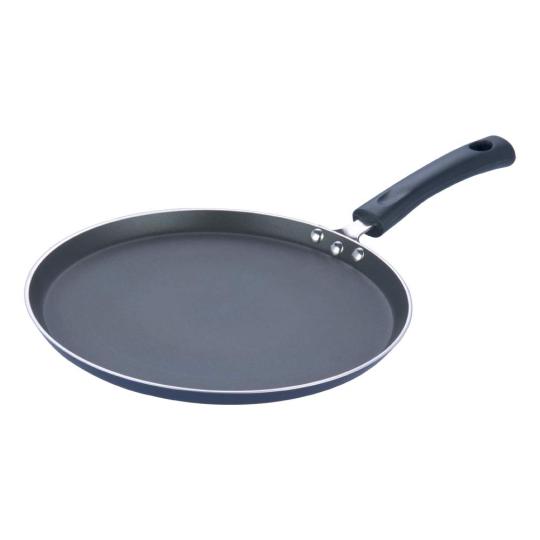
What Separates Roti Tawa From Tawa Dosa
What are the similarities and differences between a Tawa for roti and a professional dosa Tawa? is the most commonly asked question we have encountered when searching for solutions to dosa lovers' issues.
Both rotis and dosas are prepared on the same tawa. The method of cooking is the only distinction. While making dosa, you need tremendous heat to make it crisp and gorgeously golden brown, whereas making a roti requires a small amount of heat and steam. Therefore, you should opt for a Tawa that can also be used to make rotis and chapatis when purchasing the best Tawa for dosa.
What Kind of Tawa Is Best for Dosa?
As soon as we mention the word "Tawa," numerous versions appear. Tawas were originally just flat pieces of cast iron cookware without handles or other safety features. Women handled the hot object with bits of fabric, which was never a good idea while handling heavy cookware. This is why the current dosa tawa from south India has handles so you can balance them on the cooktop while the dish is being prepared.
However, since we're being specific, it's wise to go through the full structure line of the greatest dosa Tawa on the market.
The Tawa is a cookware often shaped like a circle and constructed of cast iron or aluminium.
This circular surface can have a tiny depression at the centre, like a dish, or it can be flat, like paper.
The contemporary dosa maker tawa comes with two different handle options.
After some heat treatment processes, the handle and plate are annealed to guarantee that both structures are firmly connected.
There might not be a shoulder all the way around in some tawas. However, in other designs, there will be an inch-long shoulder that serves as a guard around the perimeter.
Depending on the construction, a standard black finish lacquer or granular lacquers can be applied to the dosa rock tawa surface.
Material of Dosa Tawa
The varieties of materials used to make the best Tawa for dosa are the next thing you need to comprehend. The Tawa was often made of cast iron, which allowed for a speedier cooking time for the dosas. However, the short cooking time resulted in the food being burned or the dosa material clinging to the surface of the iron.
Due to these challenges, makers of utensils have created the best Tawa for dosa from various materials, which we shall examine in this article. But first, let's learn more about the Tawa materials available on the market.
Cast iron
Cast iron is the material that produces dosas most effectively. The iron material combines two to four per cent carbon and a small amount of nickel or chromium to create the typical Tawa cast iron. As a result, a pure iron alloy is created, making the Tawa resistant to heat and outside harm. The dosas are made the best way possible because the iron Tawas are pretty hefty.
Silver
If you want the top-quality dosa Tawa Prestige, search for models manufactured of multilayer hard-anodized oxide aluminium. Aluminium, which is then given an oxide coating, serves as the cook's primary material. The aluminium becomes heat- and corrosion-resistant after the layer has dried and become firm. As a result, you may cook the dosa at high heat without burning the meal.
Aluminium
The nonstick version is another renowned and well-known material for the best Tawa for dosa. These tales, made of Teflon or another type of heavily treated nonstick material, will allow you to cook the dosas properly without worrying about them burning or tearing. People prepare their preferred dosa varieties on nonstick tawas in most contemporary homes.
Everything you need to know about the best Tawa for dosa

Even if the top five dosa tawa on the internet have been discussed, picking one is complex. In addition, we have only covered five names. However, looking through the online shops, you'll find more than 50 distinct Tawas for cooking dosa. To assist you in finding the best Tawa for dosa, we created a buying guide.
1. Dimensions and size
Your initial task will be the proper selection of the tawa's dimensions and size. Two factors will determine the dimensions of this particular cookware:
The tawa's circular face's circumference.
The material's thickness was used to make this cookware.
Make sure you have chosen the correct size of the cookware when looking for the best tawa. For example, the two face's diameter should be selected to only take up a little room on your cooktop.
2. Substance As previously mentioned
the best Tawa for dosa is constructed from various substances, ranging from cast iron to hard-anodized aluminium. The disadvantages and advantages of the cookware will differ depending on the characteristics of the material chosen. For instance, cast iron Tawas are a common choice in commercial kitchens since they are pretty hefty. However, using an iron Tawa is far more challenging than using a nonstick Tawa. Since selecting the ideal material is complex, we have covered some advice you can use while purchasing the Tawa.
It would help if you decided on the material based on how often you will use the cookware in your home. For instance, we recommend choosing an iron dosa tawa if you only want the tawa for that purpose. On the other hand, you can select the hard-anodized aluminium or the nonstick Tawa if you're looking for an all-purpose tawa.
Your financial situation also affects your material choice. For example, a straightforward metal tawa costs less than a nonstick one. Therefore, you should raise your budget to purchase a nonstick Tawa.
Make sure the iron is of a high grade if you use a cast iron Tawa.
3. Price
The cost is another aspect to consider when choosing the best dosa Tawa. The price of the dosa tawas varies depending on several other factors, either directly or indirectly. Let's find reliable information initially if you want to understand the cookware budget.
The material you select will affect the cost of the Tawa. A nonstick Tawa, for instance, will cost more than a standard cast iron Tawa. Therefore, set your budget based on the materials you desire.
The brand of the cookware will also affect the cost. For example, you will pay a large sum if you buy a branded Tawa because a brand comes with a guarantee and high-quality parts. However, you can save money by selecting a legal firm to provide the Tawa.
The size and thickness of the material utilised to make the dosa pan will affect how much it costs. Therefore, check that you have the proper size within your budget before selecting a piece randomly.
4. Brand
You must consider the brand when selecting the greatest Tawa. Numerous well-known and regional brands are available on the market, as we have already described. As a result, you will have a wide range of brand selections; therefore, you should exercise caution when making your choice.
Here are some of the well-known companies that produce Tawa for dosa:
Prestige's
Hawkins
Solimo
The valley of the Indus
WonderChef
5. Finished appearance
The best dosa tawa in India's finished appearance is the next item you'll need to work on. On the top surface of the majority of the Tawas, a black oxide finish is often applied. But subsequently, other Tawas finishing looks have been introduced. Here, we've covered a few of the most popular finishing styles available on the market.
Hawkins Futura, Rock Tawa, and even Nirlon Tawas have matte black oxide surfaces.
In the Vinod induction Tawa, granular black oxide finishes with white particles.
The inside surface of Nirlon and Solimo Tawas is matte black, while the exterior is coated in red.
Additionally, WonderChef, Cello, and even Nirlon provide tawas with a granular grey coating.
0 notes
Photo





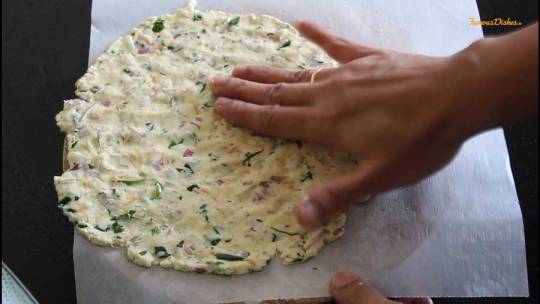
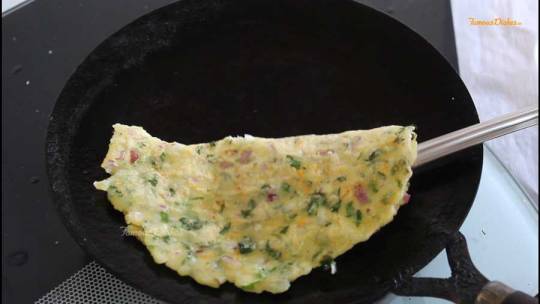
Akki roti Recipe is a very Special Breakfast recipe of Karnataka it is #flat #bread that is made using rice flour & Vegetables. It has a soft texture and is often eaten with #spicy #dishes.
Checkout Our Detail Recipe ➡️ https://famousdishes.in/recipe-for-akki-roti-karnataka-special-recipes-how-to-make-akki-roti/
Checkout recipe video ➡️ https://youtu.be/ctAlQHjq9gY
0 notes
Text
Tawa Paneer Recipe: ट्राई करें दही और चटपटे मसालों के स्वाद से भरपूर तवा पनीर की रेसिपी
Tawa Paneer Recipe: ट्राई करें दही और चटपटे मसालों के स्वाद से भरपूर तवा पनीर की रेसिपी
तवा पनीर (Tawa Paneer Recipe): पनीर ज़्यादातर लोगों को पसंद होता है. उस पर जो नॉन वेज नहीं खाते हैं, उन्हें तो प्रोटीन, कैल्शियम से भरपूर पनीर खास तौर पर पसंद होती है. पनीर की अनगिनत रेसिपीज़ हैं, जिन्हें आपने ट्राई किया होगा. टिक्का से लेकर पनीर लबाबदार तक, अगर सबकुछ आप ट्राई कर चुके हैं, तो अब आपको ट्राई करनी चाहिए पनीर की टेस्टी तवा पनीर रेसिपी. इसका चटपटा मसालेदार स्वाद आपका दिन बना देगा.
दही…
View On WordPress
#how to make paneer dish#how to make tawa paneer#tawa paneer food recipe#tawa paneer instant recipe#Tawa paneer recipe#तवा पनीर की आसान रेसिपी#तवा पनीर कैसे बनाते हैं#तवा पनीर बनाने का तरीका#तवा पनीर रेसिपी
0 notes
Text
তাওয়া স্যান্ডুইচ|| Tawa Sandwich|| ক্রিস্পি স্যান্ডুইচ|| Crispy Sandwich with veggie and cheese
তাওয়া স্যান্ডুইচ|| Tawa Sandwich|| ক্রিস্পি স্যান্ডুইচ|| Crispy Sandwich with veggie and cheese
■ Ingredients :- – bread slice – 4 pcs – carrot – ½ cup – cabbage – ½ cup – onion/ onion leaf sliced – 1 tbs– green capsicum – 1 tbs – red capsicum – 1 tbs – chaat masala – ½ tsp – pepper powder – ¼ tsp – salt – oregano – ¼ tsp – mayonnaise – 1 tbs – cheese – butter
You can visit my social site too:- Facebook: https://www.facebook.com/nunchinilonka Twitter: https://twitter.com/nunchinilonka…
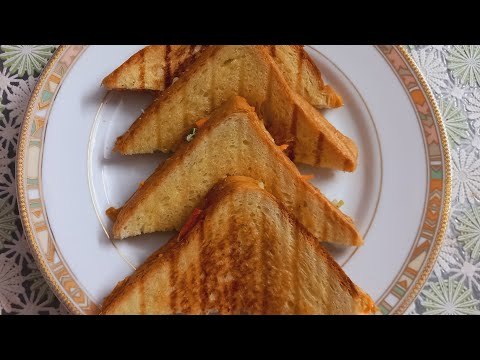
View On WordPress
#aloo sandwich recipe#bombay masala toast#Bread#cheese#cheesy veg sandwich#club sandwich recipe#How To cook#instant sandwich recipe#masala sandwich recipe#masala toast#Pizza Sandwich Recipe#quick recipe#sandwich#sandwich recipe#sandwich recipe in hindi#sandwich recipe indian style#sandwich recipes#schezwan sandwich#street style cheese sandwich#tawa sandwich recipe#veg cheese grilled sandwich#veg sandwich#veg sandwich recipe#veg sandwich with mayonnaise
1 note
·
View note
Text

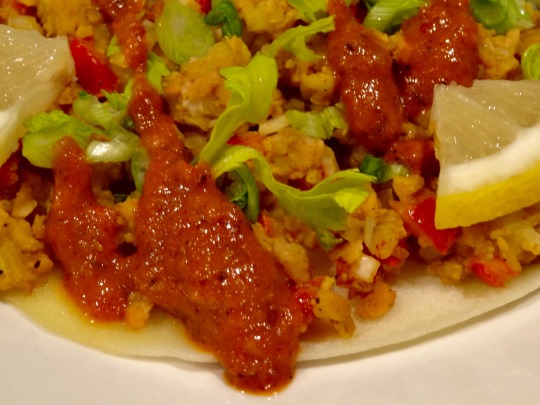
[ID: First image is a thin crèpe topped with ground 'meat,' herbs, and tomato, and garnished with lemon. Second image is a close-up of the same crèpe with a thick red sauce drizzledover it. End ID
𑐔𑐟𑐵𑑄𑐩𑐬𑐶 / चतांमरि / Chatamari (Newari rice crèpe)
𑐔𑐟𑐵𑑄𑐩𑐬𑐶 / चतांमरि (chatā̃mari), sometimes called "Newari pizza," are rice crèpes made plain or with a savory topping. Chatamari are a popular festival food among the indigenous 𑐣𑐾𑐰𑐵𑑅 / नेवा: (Naivāḥ / Newa) people, most of whom live in the 𑐣𑐾𑐥𑐵𑑅 𑐐𑐵𑑅 / नेपाः गाः (Naipāḥ gāḥ / Nepa Valley) in central Nepal. [1] They are regarded as a near-compulsory addition to the table for holidays including 𑐴𑑂𑐩𑐥𑐸𑐖𑐵 / म्ह पूजा (mha pūjā) and 𑐡𑐶𑐐𑐸 𑐥𑐹𑐖𑐵 / दिगु पूजा (digu pūjā), when they are served as snacks and appetizers.
A chatamari consists of a thin, fried crèpe, fluffy on the inside and crispy around the edges, and an optional juicy, well-spiced topping. Common toppings are vegetable (with black-eyed peas, potato, and/or soy chunks); meat (with minced chicken or buffalo and tomato); a cracked egg; or some combination thereof. Ginger, garlic, red onion, cumin, turmeric, and sometimes red chili powder and coriander add bite and aroma. To cook chatamari, a thin layer of batter is spread on a tawa, and the batter is topped; the whole is then covered with a clay conical lid and left to steam.
This recipe is for a 𑐎𑐷𑐩𑐵 / कीमा (kīmā; minced meat) chatamari with potato, but you can try replacing the meat substitute with cooked black-eyed peas, replacing the potato with more meat, or replacing the meat and potato with vegetables of your choice (try green peas, julienned carrots, and green onion)—the basic format of this dish is highly customizable.
The Nepali language is increasingly the language of broadcast, education, and even the home, to the detriment of other languages including the Newa language Nepal Bhasa (𑐣𑐾𑐰𑐵𑑅 𑐨𑐵𑐫𑑂 / नेवा: भाय्, nevāḥ bhāy). Scripts historically used to write Nepal Bhasa and Sanskrit have been almost entirely replaced with Devanagari. 𑐥𑑂𑐬𑐔𑐮𑐶𑐟 / प्रचलित (prachalit; lit. "common") was the script used by literate Newa until it began to decline at the turn of the 20th century; the 1960s governmental policy of सांस्कृतिक एकता (Nepali: sā̃skr̥tik ektā; cultural unity) further marginalized it.
Revival efforts have begun, which claim Prachalit (and the ornamental script Ranjana, also used to write Nepal Bhasa and Sanskrit) as parts of Newa identity, and seek to teach them at fairs and in workshops. A process of "ethnicity-building" and identity formation within Nepal, including pushes to use students' mother tongues as the language of instruction (with Devanagari as a "common" script) and to use minoritized languages in television and radio broadcast, have been ongoing since the 1990s.
[1] Terminology is given in Nepal Bhasa unless otherwise specified, in Prachalit followed by Devanagari script. "𑐔𑐟𑐵𑑄𑐩𑐬𑐶," "𑐡𑐶𑐐𑐸 𑐥𑐹𑐖𑐵," and "𑐎𑐷𑐩𑐵" are my transliterations from Devanagari into Prachalit. Latin transliteration is ISO 15919 standard except: "च" ([t͡ʃə]) is rendered "cha" and not "ca." Where two Latin phrases are given, the first is ISO from Devanagari, and the second is the typical English-language spelling or phrase.
Recipe under the cut!
Patreon | Paypal | Venmo
Ingredients
Makes 4 large.
For the topping:
3/4 cup (74g) textured vegetable protein + 1/2 cup (118mL) broth
Or 1 1/2 cup ground beef substitute of choice
1 russet potato (200g) (optional)
2 roma tomatoes, minced or thinly sliced
1 small red onion, minced or thinly sliced
1 green chili, diced or thinly sliced
1/2-inch chunk (5g) ginger, peeled and grated or pounded
2 cloves garlic, grated or pounded
1 tsp ground coriander
1 tsp ground cumin
1 tsp ground turmeric
1 tsp red chili powder (substitute sweet paprika to reduce spice level)
1 tsp meat masala (optional)
2 Tbsp neutral oil (if not including 'egg')
Cilantro, to top
For the egg (optional):
2 Tbsp yellow mung flour or chickpea flour (besan)
1/4 cup coconut milk
1 tsp kala namak (black salt)
You may also use any other egg substitute. This one is inspired by Vietnamese bánh xèo. The coconut milk provides binding and fat; the final topping will not taste of coconut. You may replace it with any neutral oil.
For the batter:
1 1/2 cup (240g) white rice flour
About 1 1/2 cup (350 mL) cool water
Mustard oil, to fry
The chatamari in the photo is served with achar.
Instructions
For the batter:
1. Measure flour into a bowl. Pour in water slowly while whisking until a smooth, pourable batter (the consistency of crèpe batter) forms. Set aside to rest while making the filling.
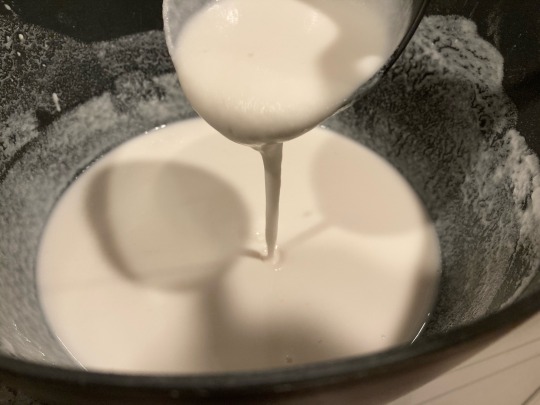
For the filling:
1. Peel and cube potato, then boil until soft. Mash thoroughly with a bean masher or fork.
2. Hydrate TVP in broth or stock (I used water with 1/2 tsp vegetarian beef stock concentrate) for 10 minutes.
3. Mix potato, minced tomatoes and onion, ground 'meat', spices, and 'egg' together in a large mixing bowl until well-combined.
To assemble:
1. Heat a large tawa, comal, or nonstick skillet on medium. Fill a ladle with 100 mL (a bit less than 1/2 cup) of batter, and pour it into the center of the skillet; it should become round on its own. Thin it out a bit with the bottom of the ladle.
2. Cover the top of the batter with the topping, leaving a bit of space on the edge. Optionally, add about 2 tsp of oil around the edges of the chatamari to crisp.
3. Lower the heat to low and cover. Cook for 7 minutes. Remove chatamari onto a plate.
If the rice pancake cracks, your batter is too thin; try resting it, uncovered, for 5-10 minutes, then stirring it and trying again.
4. Raise heat to medium for a minute. Add another ladle of batter, top the chatamari, add oil, lower the heat and cover to cook as before. Repeat until batter or filling runs out.
89 notes
·
View notes
Text
Red Rice Dosai
Authentic Red Rice Dosai: A Delicious and Nutritious Delight.Indulge in the flavors of tradition with our recipe for Red Rice Dosai, crafted using the finest Kuzhi Vedichan rice. This South Indian delicacy boasts not only tantalizing taste but also a wealth of health benefits. Made from a blend of red rice, urad dal, and a hint of fenugreek, these dosai are a perfect fusion of flavor and…
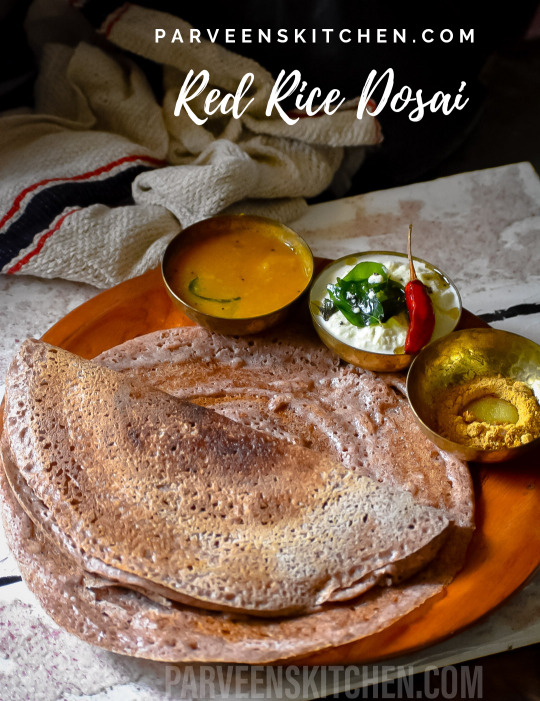
View On WordPress
#chutney#crispy dosa#Curry#dosa batter#dosa recipe#dosa skillet#dosa tawa#dosa toppings#fenugreek#fermentation#flavorful dosai#gluten-free dosa#healthy breakfast#homemade dosa#Indian breakfast#Indian cooking#Kuzhi Vedichan rice#Red Rice Dosai#sambar#south indian cuisine#Traditional Recipe#Urad dal#Vegetarian Recipe
0 notes
Note
Do you have a favorite kind of plant? A favorite tree?
chinese hibiscus are my favourite flowers, next to star jasmine and tiger lilies. all grow in my grandparents' yard in malaysia ❤️
in a wider scope, i study dye plants and trees and thus the plants i can identify and feel most connected to are dye precursors, especially those used traditionally across southeast asia. when i think of my favourite trees i think of all these tropical hardwoods and plants. so here is a non-exhaustive list of southeast asian dye plants:
🌻 sappanwood (biancaea sappan) also called brazilwood not to be confused with another, different tree also called brazilwood; it was taken from southeast asia by the portuguese and brought with them to the americas - red, pink, purple
🌻 indigo (called tagom or tagum in various filipino languages, tarum in malay) - blue, blue, blue, there are several species but japanese indigo as well as a few other varieties are commonly grown
🌻 annatto seed (this is the most common of filipino dyes from what i've read) - yellow, orange, red
narra woodchips (national tree of the philippines) - brown, red, pink, pinkish brown
asthma plant (tawa-tawa) - yellow
indian almond tree (talisay) - the roots, leaves, bark, all rich with tannins, yellow dye naturally but can give greys and blacks
mahogany (mahoni in malay) - reddish brown
taro plant (called gabi, aba, abalong) - leaves give yellowish green
🌻 turmeric root (kunyit in malay) - yellow. not very lightfast so usually combined with other dyes
🌻 ceriops tagal (mangrove - soga tinggi in indonesian) - reddish rusty warm brown, a vital and very rare dye now due to deforestation. the dyers in bali i know who use it source it from a fair trade org in papua that harvests small, controlled amounts. i have been very lucky to use this and the colour is magnificent
yellow flamboyant bark or yellow flame (soga jambal in indonesian, peltophorum pterocarpum) - warm yellow to red to dark brown, using peeled bark
cudrania javanensis (tegeran in indonesian) wood - yellow
🌻 cockspur thorn (maclura cochinchinensis) - yellow, very strong high quality yellow
mango - leaves, bark, peels give yellow, especially when processed as lake pigment
angsana - wood shavings make honey brown
🌻 jackfruit heartwood - clear strong yellow
🌻 symplocos - natural bio-accumulator of aluminum, used as a mordant in dyeing
🌻 fire flame bush (woodfordia fruticosa) - flowers contain strong tannins, combined with mangrove mud and fermented to raise the iron in the mixture to create a dye that is the primary traditional way of achieving grey through black
pandan leaves, mangosteen leaves and peels, cassava leaves, and lemongrass are all also used as dye plants. i have seen recipes where cassava leaves and mango leaves are pounded together in water and left to ferment in the sun to create yellows and greens
🌻 = i have personally dyed with these
#several are not native but brought over from central and south america#but they are all naturalized afaik
24 notes
·
View notes
Text
Vegan Tawa / Tepsi / Kurdish Eggplant Casserole
RECIPE: Tawa, Kurdish Eggplant Casserole (Serves 4-6)
Ingredients:
3 waxy potatoes, slices
2 eggplants, sliced
2 tomatoes, sliced
1-2 onions, sliced
1 green bell pepper or 4 small pointy peppers
1 small bunch parsley, finely chopped
flaky sea salt
Oil for frying
Tomato broth:
6-8 tbsp tomato paste
2 tbsp olive oil
1 tbsp 7 spice blend (can be found att Middle Eastern stores)
1 tsk bild red pepper flakes (such as e.g. Aleppo Chili)
1 tbsp vegetable stock powder
Salt & pepper to taste
400 ml boiling water
Instructions:
- Pre-heat oven to 200 C / 390 F.
- Sprinkle the eggplants with some flaky salt, place in a colander and put an heavy object on top, let sit for at least 2 minutes then brush off liquid and salt with a clean kitchen towel.
- Heat oil in a pan and fry eggplants on each side until golden. You can do this over high heat since they don’t have to cook through and that way they won’t absorb as much oil either. Let excess oil drip off when removing them from pan. Fry peppers for 30 seconds on each side as well.
- Place potatoes in an even layer at the bottom of you oven dish. Layer the eggplant and the rest of the veggies as you wish. Sprinkle with parsley.
- Mix together all ingredients for the tomato broth and pour over the veggies. Cover the pan and bake for 45 minutes. Remove cover and bake for another 20-30 minjutes, cover again if top layer is getting too browned.
- Serve with rice or bread.
#vegan#lunch#dinner#kurdish cuisine#middle eastern cuisine#west asian cuisine#casserole#tawa#tepsi#eggplant#potato#tomato sauce#tomatoes#onion#bell peppers#parsley#Lebanese 7 spice#aleppo#olive oil#black pepper#sea salt
12 notes
·
View notes
Text
How To Use Leftover Sabzi? 5 Interesting Recipes You Must Try
How To Use Leftover Sabzi? 5 Interesting Recipes You Must Try
Leftover meals is a quite common incidence in our properties. Sabzi with roti, for instance, is a staple meal in lots of Indian households. However, there are occasions after we find yourself making numerous dishes (sabzis). What do you do with that leftover sabzi? Of course, it goes within the fridge, however what occurs after that? You discard it after a while. Ever puzzled tips on how to add a…
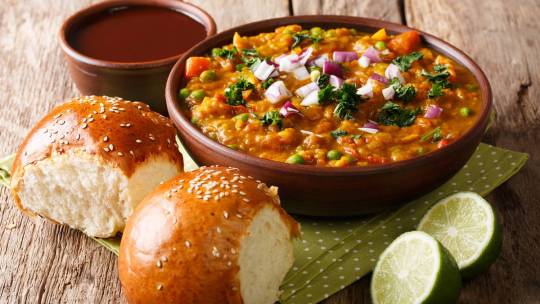
View On WordPress
#delicious snacks ideas#frankie recipe#leftover food ideas#leftover food snacks recipes#pakoda recipe#pav bhaji with leftover food#tasty snacks recipe#tawa pulav from leftover food
0 notes
Text
youtube
#ecoprint #naturaldye #bundlesecoprint
The Secret of Ecoprint Technique (Full Tutorial) Part 1 • The Secret Recipe of E...
The Secret of Ecoprint Technique (Full Tutorial) Part 2 • The Secret of Ecoprint...
So hi, im roman, FINALLY todays video id like to show you the secret recipe how i made ecoprint on fabric, how i create a beautifull print on it, a secret why and how the leave or the flower leave their shape beautifully, this is base on my exploration, maybe the weather, ph level of water and so many factor will affect the result, but you can try this recipe.
This video is maybe long, but i dont want to cut the video so i will show you every step of the process of the textile making.
Step by step :
1. Choose the best fabric/materials
2. Clean the fabric (Scouring), i have 2 ways to clean deeply the fabric (2 method)
3. Preparing the fabric (Mordanting), 2 step to make your fabric is ready to dye.
4. Selection of the plants.
5. Bundles and Steam Technique.
6. I love you.
1. Fabric / Materials
The first is the most important before you making natural dyes, selection of fabric or material, because we work on natural dyes, natural things, so make sure the fabric that u ll be use is from nature also, like linen, cotton, or maybe silk.
2. Scouring
The second, is to scoured the fabric, what is scouring means? Scouring refers to thoroughly washing or deep cleaning the fabric, to remove residue or residual chemicals on the cloth from the factory when fabric making.
This is one factor of success in achieving strong color on natural dyes, is to start with completely clean fabric. Does this mean fabric washed in washing machine? No! We think the washer gets our clothes totally clean but it honestly does not. That is why, to get a good even coverage with your dyes, it is very important that you deep clean your cellulose fabric such as cotton, linen, bamboo, or maybe silk.
For me, this is my method, i have 2 ways to scour the fabric, the first is boil the fabric on hot water with some soda ash about 20 minutes, or if you dont have a soda ash you can use any detergent, but i recomend a soda ash and TRO (Turkish Red Oil). Boil for 20 minutes and ready for the next step, but if you patient enoght i have another tips, another methos, that is leave your fabric on soda ash mix with water for about a night or a couple night, until the fabric is clean and dry it.
3. Mordant
The 3rd step, next for this step is to mordant the fabric, what is mordant means? Mordant is like to prepare your fabric for natural dyes, mordanting process make your fabric good enought to sticking the tanin (the substance in plants that produces color/natural dyes) from leaves and flower. More rich the tannins on a plant, more strong the color will be.
There is 2 step of mordanting the fabric,
Mordant First step, recipe (you can re-adjust composition) :
Aluminium Sulfate (Tawas)
Iron Sulfate (Tunjung)
Baking Soda
Vinegar
Mix all the ingredients with water
Dry the fabric.
Note : be careful with fragile fabric like silk, dont add too much recipe
Mordant Second step, recipe :
Calcium Carbonate (lime betle/kapur sirih)
Mix with water
Ready to print or you can dry it and keep for print when you need. (Make sure make it wet again the fabric before you print)
For the precise composition please follow and dm me on instagram / roman.muhtar ✨
4. Selection of Plant
More rich the tannin on a plant, more strong the color will be.
What i choose :
Hibiscus flower (Bunga sepatu)
Bidens pilosa (Dom dom an/babadotan)
Acalypha (Daun Ekor Kucing)
Vernonia (Daun Afrika)
And many more you can explore
5. Bundles Ecoprint
Here‘s tutorial • Bundle Ecoprint Tutori...
6. Thanks for watching, i love you!!!
Lets be friend
Lets be friend
/ roman.muhtar
/ romannuansa
my work https://msha.ke/boolao
#Roman Nuansa#solarpunk#how to#how to eco print#how to bundle dye#eco print#bundle dye#diy#do it yourself#natural materials#natural fabrics#natural dye#Youtube
6 notes
·
View notes